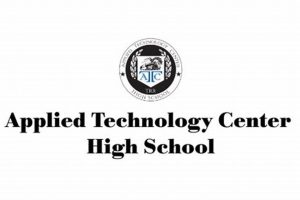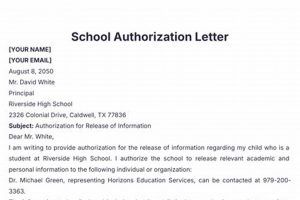Experiential learning opportunities within the field of designing, constructing, and maintaining aircraft and spacecraft are available for secondary school students. These programs often involve practical work alongside industry professionals, offering exposure to various specializations like aerodynamics, propulsion, and avionics. For example, a student might assist with data analysis on wind tunnel tests, contribute to software simulations of flight systems, or participate in the assembly of small-scale experimental aircraft components.
Early exposure to the aerospace sector provides invaluable advantages for aspiring engineers. Such programs can foster critical thinking skills, problem-solving abilities, and a deeper understanding of STEM principles. Moreover, participation can bolster students’ academic portfolios, enhancing their competitiveness for university admissions and future career prospects. Historically, the aerospace industry has relied on a pipeline of skilled engineers and scientists, and programs for pre-college students represent a crucial investment in the future of this technologically demanding field.
This article will explore the various types of available pre-college aerospace programs, including details on application procedures, program requirements, and potential learning outcomes. Furthermore, it will highlight prominent organizations offering such experiences and provide resources for students seeking opportunities to launch their careers in aerospace engineering.
Tips for Securing Pre-College Aerospace Opportunities
Successfully obtaining an early-career position within the aerospace sector requires proactive planning and a focused approach. The following tips provide guidance for students pursuing such valuable experiences.
Tip 1: Develop a Strong Foundation in STEM Subjects: A solid academic background in science, technology, engineering, and mathematics is essential. Focus on coursework in physics, calculus, and computer science to demonstrate aptitude and preparedness for the demands of aerospace engineering.
Tip 2: Cultivate Relevant Skills: Programming skills, especially in languages like Python or MATLAB, are increasingly valuable in aerospace. Developing proficiency in CAD software and data analysis tools can also significantly enhance a candidate’s profile.
Tip 3: Seek Extracurricular Activities: Participation in robotics clubs, science competitions, or aviation-related activities demonstrates passion and practical experience. Building and launching model rockets, for example, provides hands-on experience with aerodynamic principles.
Tip 4: Network with Professionals: Attend aerospace conferences, webinars, and career fairs to connect with industry experts. Joining professional organizations like the American Institute of Aeronautics and Astronautics (AIAA) can provide networking and mentorship opportunities.
Tip 5: Craft a Compelling Resume and Cover Letter: Highlight relevant skills, academic achievements, and extracurricular activities that demonstrate a genuine interest in aerospace. Tailor the cover letter to each specific opportunity, emphasizing alignment with the organization’s mission and research areas.
Tip 6: Prepare for Interviews: Research the organization and its current projects. Practice answering common interview questions, focusing on experiences that showcase problem-solving abilities, teamwork skills, and a passion for learning.
Tip 7: Explore Diverse Opportunities: Research various types of programs, including internships, research experiences, and summer camps offered by universities, government agencies, and private companies.
By following these recommendations, students can significantly improve their chances of securing valuable aerospace experiences and launching a successful career in this exciting field.
These preparatory steps not only enhance application competitiveness but also cultivate essential skills and knowledge for long-term success within the aerospace industry. The subsequent sections will delve into specific program examples and resources available to aspiring aerospace engineers.
1. Hands-on Experience
Practical experience is a cornerstone of successful aerospace engineering high school internships, offering students invaluable opportunities to apply theoretical knowledge in real-world settings. This direct engagement bridges the gap between classroom learning and professional practice, fostering a deeper understanding of aerospace principles and cultivating essential skills.
- Experimental Design and Testing
Interns might participate in designing and executing experiments related to aerodynamics, propulsion, or material science. This could involve wind tunnel testing of airfoil designs, analyzing the performance of different rocket propellant mixtures, or evaluating the structural integrity of composite materials. Such experiences provide insights into the scientific method and data analysis techniques essential for aerospace research and development.
- Software and Simulation
Many aerospace projects rely heavily on computational tools. Interns may gain experience with specialized software used for flight simulation, 3D modeling (CAD), or data analysis. For instance, they might contribute to developing simulations of aircraft flight control systems or designing components for a satellite using CAD software. This exposure enhances technical proficiency and equips students with valuable skills for future academic and professional endeavors.
- Hardware Assembly and Integration
Opportunities to participate in the physical construction and assembly of aerospace systems provide a tangible understanding of engineering design principles. Interns could assist in assembling small-scale unmanned aerial vehicles (UAVs), integrating sensors into a satellite payload, or building components for a rocket engine test stand. This hands-on involvement fosters practical skills in mechanical assembly, electronics, and systems integration.
- Data Analysis and Interpretation
Aerospace engineering relies heavily on data analysis to understand system performance and identify areas for improvement. Interns may have opportunities to analyze data from flight tests, simulations, or wind tunnel experiments. They might use statistical methods to identify trends, develop visualizations to communicate findings, and contribute to reports that inform design decisions. This experience strengthens analytical skills and provides insights into data-driven decision-making processes within the aerospace industry.
These hands-on experiences cultivate a practical understanding of aerospace engineering principles and methodologies, fostering the development of crucial skills applicable throughout an engineering career. Through active participation in real-world projects, students gain a deeper appreciation for the challenges and rewards of aerospace engineering, strengthening their commitment to the field and enhancing their future career prospects.
2. Skill Development
Aerospace engineering high school internships offer a unique platform for skill development crucial for success in the field. These programs provide opportunities to cultivate technical proficiencies, strengthen professional skills, and foster essential personal attributes. The demanding nature of aerospace engineering requires a diverse skill set, and early exposure through internships significantly enhances a student’s preparedness for future academic and career pursuits. For example, an intern tasked with designing a control system for a small satellite will develop skills in programming, systems engineering, and problem-solving.
Technical skills gained during these internships often include proficiency in computer-aided design (CAD) software, programming languages relevant to aerospace applications (such as Python or MATLAB), and data analysis techniques. Furthermore, internships frequently involve working with specialized equipment and software used in areas like aerodynamics, propulsion, and avionics. Exposure to such tools and technologies provides a distinct advantage when pursuing higher education and entering the professional workforce. An intern working on a wind tunnel experiment, for instance, will gain practical experience with data acquisition systems and aerodynamic measurement techniques.
Beyond technical proficiencies, aerospace engineering high school internships cultivate vital professional skills such as teamwork, communication, and project management. Working collaboratively on complex projects within a professional setting fosters effective communication and teamwork abilities. Managing project timelines, resources, and deliverables enhances organizational and project management skills. These non-technical skills are highly valued in the aerospace industry and contribute significantly to career advancement. The combination of technical expertise and professional aptitude acquired through internships equips students with a robust foundation for a successful future in aerospace engineering. This early skill development not only enhances career prospects but also fosters a deeper appreciation for the complexities and rewards of the field.
3. Career Exploration
Aerospace engineering high school internships provide invaluable opportunities for career exploration within a dynamic and technologically advanced field. These experiences offer students a glimpse into various specializations within aerospace engineering, allowing them to assess their interests and aptitudes before committing to a specific career path. Exposure to diverse roles and responsibilities within the industry fosters informed decision-making regarding future academic pursuits and professional goals. Such early exploration can significantly impact long-term career satisfaction and success.
- Specialization Discovery
The aerospace industry encompasses a broad range of specializations, including aerodynamics, propulsion, avionics, and structural design. Internships expose students to these diverse areas, enabling them to identify fields that align with their interests and strengths. For instance, an internship focused on computational fluid dynamics might spark a passion for aerodynamics, while experience with embedded systems could lead to a pursuit of avionics. This early exposure facilitates informed specialization choices in later academic and professional endeavors.
- Industry Insight
Internships offer a firsthand look into the day-to-day realities of working in the aerospace industry. Students gain insight into the professional environment, work culture, and collaborative nature of aerospace projects. Observing interactions between engineers, scientists, and technicians provides a realistic perspective on potential career paths and fosters a deeper understanding of the industry’s operational landscape. This practical experience can be instrumental in solidifying career aspirations and setting realistic expectations for future employment.
- Networking and Mentorship
Internships often provide opportunities to interact with experienced professionals in the field, fostering valuable networking connections and potential mentorship relationships. Engaging with engineers and scientists through presentations, project discussions, or informal meetings can provide insights into career progression, industry trends, and specialized skill development. These connections can serve as valuable resources for guidance and support throughout a student’s academic and professional journey.
- Skill Assessment and Development
Participating in internship projects allows students to assess their existing skills and identify areas for improvement. Practical application of theoretical knowledge highlights strengths and weaknesses, informing future skill development efforts. For example, an intern struggling with programming tasks might recognize the need for further coursework or independent study in computer science. This self-assessment process is crucial for targeted skill development and enhances preparedness for future academic and professional challenges.
By providing a structured environment for exploring various facets of the aerospace industry, internships empower students to make informed decisions about their future careers. This early exploration not only clarifies career goals but also cultivates essential skills, builds professional networks, and enhances overall preparedness for success in the dynamic field of aerospace engineering. These experiences serve as a crucial bridge between academic learning and professional practice, equipping students with the knowledge and insights necessary to navigate their career paths with confidence and purpose.
4. Networking Opportunities
Networking opportunities represent a crucial component of aerospace engineering high school internships, providing students with invaluable connections and resources within the industry. Building professional relationships early in one’s academic career can significantly impact future opportunities, including mentorship, career guidance, and access to specialized knowledge. These connections can also offer insights into the diverse career paths within aerospace engineering and provide a framework for navigating the transition from academic studies to professional practice.
- Industry Conferences and Events
Internships often facilitate access to industry conferences and events, providing opportunities to interact with professionals from various aerospace organizations. Attending presentations, workshops, and networking sessions exposes students to current research, technological advancements, and industry trends. For instance, attending a conference on satellite technologies can connect students with engineers specializing in areas like communication systems or orbital mechanics, providing valuable insights into specialized career paths.
- Company-sponsored Events and Workshops
Many aerospace companies host events and workshops specifically designed for interns and early-career professionals. These events offer a platform for networking with company representatives, learning about specific projects and initiatives, and gaining a deeper understanding of the company culture. Participating in a workshop on aircraft design, for example, could lead to connections with engineers working on cutting-edge aircraft development programs.
- Mentorship Programs
Some internships incorporate formal mentorship programs, pairing students with experienced professionals who provide guidance and support. Mentors can offer valuable advice on career development, skill development, and navigating the challenges of the aerospace industry. A mentor specializing in propulsion systems, for example, could provide insights into the specific skills and educational pathways required for a career in that field.
- Professional Organizations
Internships can introduce students to professional organizations like the American Institute of Aeronautics and Astronautics (AIAA). Joining such organizations provides access to a broader network of aerospace professionals, career resources, and opportunities for continued learning. Participating in AIAA student chapters, for instance, connects students with peers and professionals who share similar interests and career aspirations.
These networking opportunities, embedded within the internship experience, significantly enhance a student’s understanding of the aerospace industry and foster connections crucial for future career success. Cultivating professional relationships, gaining industry insights, and accessing mentorship guidance provide a foundation for informed career decisions and successful transition into the professional world. The combination of practical experience and networking opportunities offered through internships equips aspiring aerospace engineers with the tools and connections necessary to thrive in this dynamic and competitive field.
5. Mentorship Access
Mentorship access forms a critical component of effective aerospace engineering high school internships, providing invaluable guidance and support for aspiring engineers. These relationships offer personalized insights into the industry, fostering professional development and facilitating informed career choices. Effective mentorship programs within internships can significantly impact a student’s understanding of the field, enhance technical skill development, and cultivate crucial professional attributes. For example, a mentor experienced in spacecraft design could guide an intern through the intricacies of thermal analysis, offering practical advice and real-world context to complement theoretical learning. This personalized guidance accelerates skill acquisition and fosters a deeper understanding of specialized areas within aerospace engineering.
Mentorship within aerospace internships extends beyond technical guidance. Mentors often provide valuable insights into career paths, industry trends, and professional development strategies. Discussions regarding educational pathways, specialization choices, and career progression empower students to make informed decisions about their future. A mentor working in the field of autonomous flight, for example, could provide an intern with valuable perspectives on the emerging trends and skill requirements within this rapidly evolving area. This forward-looking guidance allows students to tailor their academic pursuits and skill development towards specific career goals within the broader aerospace landscape. Furthermore, mentors can offer advice on navigating professional challenges, building effective communication skills, and fostering successful teamwork dynamicsessential attributes for a thriving career in any engineering discipline.
Mentorship programs within aerospace engineering high school internships contribute significantly to the overall value and impact of these experiences. The personalized guidance, industry insights, and professional development support provided by mentors enhance technical skill acquisition, inform career choices, and cultivate essential professional attributes. Challenges in establishing and maintaining effective mentorship programs include resource constraints and scheduling complexities. However, addressing these challenges is crucial for maximizing the benefits of internships and ensuring that students receive the comprehensive guidance necessary to thrive in the demanding field of aerospace engineering. Structured mentorship programs, coupled with practical experience, significantly contribute to the long-term success of aspiring aerospace engineers, fostering a robust pipeline of talent within the industry.
6. Academic Enhancement
Aerospace engineering high school internships offer significant academic enhancement beyond traditional classroom learning. These experiences provide practical application of theoretical concepts, enriching students’ understanding of scientific and engineering principles. Exposure to real-world projects and professional environments strengthens academic portfolios, enhancing competitiveness for university admissions and scholarships. Such early engagement with the field fosters a deeper appreciation for aerospace engineering, motivating further academic pursuits and contributing to long-term academic success.
- Reinforced Understanding of STEM Concepts
Internships bridge the gap between theoretical knowledge and practical application, reinforcing understanding of core STEM concepts. For example, an intern applying principles of fluid dynamics to design a more efficient airfoil gains a deeper appreciation for the practical implications of scientific theories. This experiential learning solidifies understanding and cultivates critical thinking skills essential for academic success in STEM fields.
- Enhanced Research and Project Skills
Participating in research projects within an internship setting cultivates essential skills in experimental design, data analysis, and scientific communication. An intern involved in testing composite materials for spacecraft construction gains practical experience in conducting experiments, analyzing data, and presenting findings. These skills are highly transferable to academic research projects and enhance preparedness for undergraduate studies.
- Strengthened College Applications
Internship experiences significantly strengthen college applications, demonstrating a genuine interest in aerospace engineering and a commitment to pursuing STEM fields. Practical experience gained through internships provides compelling content for application essays and interviews, showcasing a student’s initiative, passion, and aptitude for aerospace engineering. This can be a decisive factor in competitive university admissions processes.
- Improved Performance in STEM Courses
Practical application of concepts encountered during internships can directly translate to improved performance in related STEM coursework. An intern working on a project involving orbital mechanics, for example, will likely develop a deeper understanding of physics and calculus concepts, leading to improved performance in related high school courses. This reinforcement of theoretical concepts through practical experience creates a positive feedback loop, fostering academic growth and motivation.
These academic benefits, derived from aerospace engineering high school internships, extend beyond immediate academic gains, cultivating a lifelong passion for learning and laying a strong foundation for future academic and professional success within the field. The practical experience, skill development, and professional connections fostered through internships collectively contribute to a well-rounded academic profile and position students for a successful transition into higher education and beyond. Furthermore, these experiences foster a deeper appreciation for the challenges and rewards of aerospace engineering, inspiring continued academic exploration and commitment to the field.
Frequently Asked Questions
This section addresses common inquiries regarding pre-college aerospace engineering experiences, providing clarity and guidance for aspiring young engineers.
Question 1: What are the typical eligibility requirements for high school aerospace internships?
Eligibility requirements vary depending on the specific program. Many programs require students to be at least 16 years old and have completed specific coursework, such as algebra, trigonometry, and physics. Some programs may also consider extracurricular activities and demonstrated interest in STEM fields. Checking individual program websites for specific prerequisites is recommended.
Question 2: How can students find available aerospace internship opportunities?
Opportunities can be found through online databases, professional organization websites (like AIAA), direct inquiries to aerospace companies and research institutions, and school guidance counselors. Networking at STEM events and career fairs can also lead to undiscovered opportunities.
Question 3: Are aerospace internships typically paid or unpaid?
Both paid and unpaid internships exist within the aerospace sector. Paid internships are often more competitive but provide valuable financial support. Unpaid internships, while not financially compensated, can still offer significant experience and networking opportunities. The availability of each type varies depending on the organization and specific program.
Question 4: What is the typical duration of a high school aerospace internship?
Duration varies depending on the program structure. Summer internships often range from a few weeks to several months. Some programs may offer part-time opportunities during the academic year, allowing students to gain experience while continuing their studies. Program specifics are generally available on the organization’s website or application materials.
Question 5: How can students with limited prior experience make their applications competitive?
Highlighting strong academic performance in STEM subjects, relevant extracurricular activities (e.g., robotics clubs, science competitions), and a demonstrated passion for aerospace engineering can strengthen applications. A well-crafted cover letter showcasing genuine interest and alignment with the program’s objectives can also compensate for limited practical experience.
Question 6: What are some long-term benefits of participating in a high school aerospace internship?
Long-term benefits include enhanced university applications, a stronger foundation for pursuing aerospace engineering degrees, early career exploration and specialization, valuable networking connections, and a competitive edge in the job market. These experiences often translate into increased career opportunities and accelerated professional development within the aerospace industry.
Thorough research and preparation are crucial for securing and maximizing the benefits of pre-college aerospace experiences. Understanding eligibility criteria, application procedures, and program expectations enhances the likelihood of a successful and rewarding internship experience.
The following section will provide a comprehensive list of resources to assist students in their search for aerospace engineering high school internships.
Conclusion
Aerospace engineering high school internships offer invaluable opportunities for aspiring engineers to gain practical experience, develop essential skills, and explore diverse career paths within a dynamic and technologically advanced field. These programs provide a crucial bridge between theoretical learning and professional practice, fostering a deeper understanding of aerospace principles and cultivating the technical and professional skills necessary for success. From hands-on projects and specialized training to networking opportunities and mentorship access, these internships equip students with the tools and connections they need to thrive in the competitive landscape of aerospace engineering. The academic enhancement provided by these experiences strengthens college applications and lays a solid foundation for future academic pursuits.
The future of aerospace engineering relies on a pipeline of talented and passionate individuals equipped to tackle the complex challenges and exciting opportunities that lie ahead. Investing in pre-college aerospace education and providing experiential learning opportunities, like internships, are critical for cultivating the next generation of aerospace innovators. Students seeking to contribute to this dynamic field are encouraged to explore the diverse resources available and pursue these invaluable opportunities to launch their careers in aerospace engineering.







